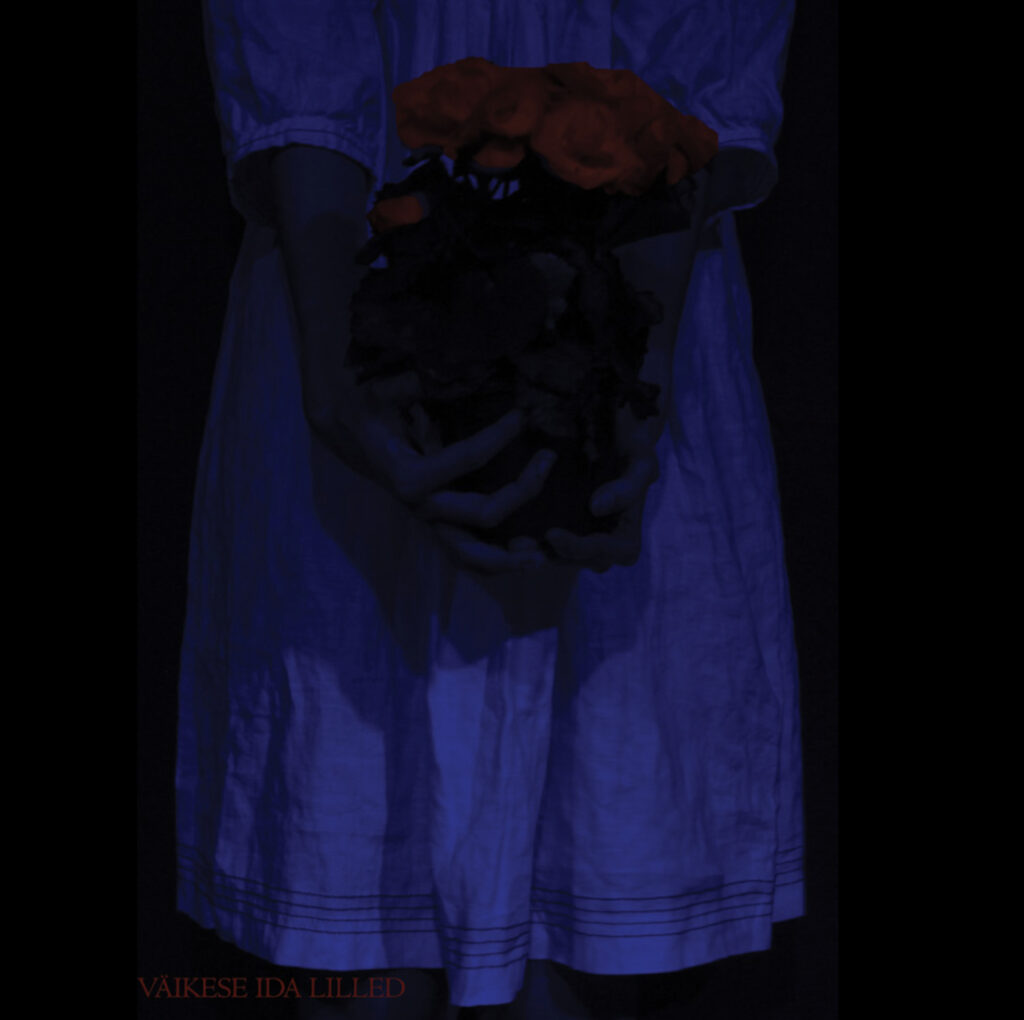2018
Theatre project
Bachelor's Thesis Project
Team
Production design: Elizabeth Matkiewicz

This is a Bachelor's Thesis project, based on Hans Christian Andersen’s fairytale “Little Ida’s flowers“ and influenced by psychoanalytic’s Vladimir Medvedev’s analysis. This project is in a form of a play which would be for children age 10+ and adults. The story takes place in Denmark in 1835 and portrays both reality as well as fantasy as dream worlds. Though it tells the story of a small danish girl named Ida and her flowers, the play itself deals with the themes of life and death, existential questions, the process of adolescence, and determining whether to keep the innocent inner child alive or not.
As we are dealing with a fairytale, the play is brought to a provisional world. As a prototype, real-world elements are taken – historical furniture, costumes, but everything is brought to suspension. Theatre itself is a place of magic, where an observer escapes from everyday life and dives into a charaсter’s world. This is why I used different magical elements as illusions and projections to misguide the ordinary spectator’s eyes.
An observer is lead through the journey between worlds with light and smoke. Smoke appears when an action takes place in the world of dreams, light changes depending on the sleeping phase. Decorations are stretched out in order to show the suspension and show the world through a child’s perspective.
A word, with which one could describe this play would be – borderline. As it is in between reality and dream, fantasy worlds; characters are in between normality and craziness.
The process began with picking a play. I chose Andersen's "Little Ida's Flowers" fairytale as it proposed a fascinating inner world with a hidden deep psychologic meaning. I referred to psychoanalytic Vladimir Medvedev, whose analysis helped me pinpoint angles I wanted to emphasize in directing my project. I was enchanted by how differently children and adults perceive things and wanted to create something both age groups could enjoy and find their own interpretations of what they saw on a stage as well as have something left to think about after the performance.
It was also necessary to understand what mood should the audience experience through visuals. I wanted to go for something magical but yet with a small hint of something maleficent. To better communicate the wanted mood, I created a mood board. As the mood was defined, the process of creating costumes and set began.
For the costumes, I have researched fashion in Denmark in the 19th century. However, only some elements bear historical accuracy, the rest is brought to suspension.
While searching for inspiration, I stumbled upon "Ru Paul's Drag Race" filled with very creative and glamorous clothes. After being so inspired by creativity and glamour from the show as well as psychoanalysis of the play, I decided that in addition, my flowers would need a slightly sexual tone hidden in the costumes and as well as being a bit over the top to stress that this is a fantasy world setting. The same over-the-topness is shown in make-up too: lots of glitter, colors and fake lashes.
Working with the set, I have researched furniture and interiors in Denmark in 1835. While I tried to be accurate, elements in the interior are still brought into suspension. Within the process, it was brought to my attention that I am stretching figures in my drawings as well as that I might see things from a slightly different perspective due to my height (153,5 cm). It led me to imagine that child sees things in a bit different perspective and I ended up stretching the interior elements to show that child's perspective because the main character in the play is a child. However, the stretched interior elements become more and more transparent as they stretch to show how thin the gap between the dream world and reality is.